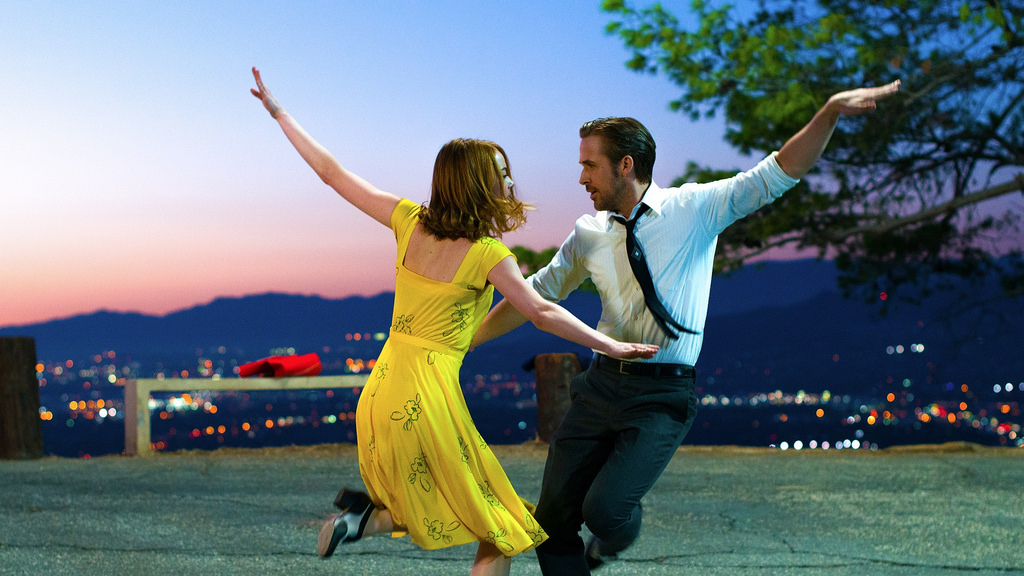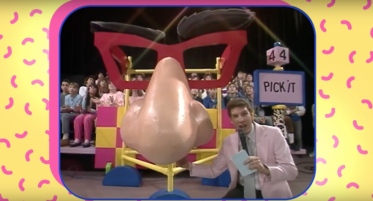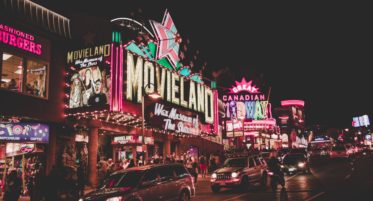
Prompt Images
Living in America in 2017 is to endure a constant, unceasing river of voices asking anyone who will consume their particular brand of media, “Is this real?” If you turn on the television, read anything on the internet, or pay attention to any sort of buzzing on your pocket computer phone life-destroyer, then you are one of millions, billions, who has been harassed recently with this anxious question.
It is exhausting, deeply demoralizing, suicidally relentless, and above all else a profound, intensely exacting destruction of reality for millions upon millions of normal, happy people.
Which is why La La Land seemed so nice to watch for like two hours. Cinematic escapism, as most flavors of escapism tend to be, is a true form of ignorant bliss. This film is beautiful, its story sweet as sugar, and its distilled message of chasing your dreams as American as 180 proof moonshine.
But this film, like most non-edible consumable things, settled in as something desperately sad. La La Land is a film about two struggling artists who fall in love by helping each other find creative success. To both of them, the only way to keep the dream of creative success alive is to lie, lie, lie to themselves, and deny the reality (failure!) that unblinkingly leers.
This phenomenon (as are all flavors of escapism!) is a noble, tried and true method to motivate a person’s fight to achieve their dreams. I am thrilled to report that both Mia (Emma Stone) and Sebastian (Ryan Gosling) achieve their lofty artistic goals, though sadly at the expense of their very weird/cute relationship.
But not before we’ve had some tap dance.
This film is a love letter to denying reality. Mia and Sebastian are pulled in and out of reality, and there are some really amazing production tricks that enhance this message. The audience and the characters both constantly check in with themselves to ask “Wait, are we in a movie or what?”
Opening on a Los Angeles freeway, we see a line of everyday people in a long tracking shot that introduces each person separately, by the music they’re listening to in the car. Similar to the opening of Orwell’s Touch of Evil, as we pass each car, the music fades in and out and pans as if we we’re sitting on the camera’s dolly, hearing the music from the perspective of the cameraman. This is important because it creates a realistic representation of how you’d hear those sounds in the world.
As always, the musical number changes everything.
We’re transformed into a polished, studio-produced sounding musical track, and the scene unfolds to a hundred dancers flying around their vehicles, trapped on 405 in the infamous Los Angeles sunshine.
Throughout this opening number, the filmmakers go to great pains to insert sound design that matches the environment—car doors slamming or close-mic recordings of the principal dancers as they approach the camera. Small details like this show that these characters are in their version of reality.
The very first tracking shot is a post-production recreation of what we’d hear if we walked by the scene in real time, but it’s strangely absent of any of the unimportant sonic information, or what doesn’t contribute directly to the opening number, “Another Day of Sun.” In this scene, the warts of reality have been removed. Why would the filmmakers take out the foot scrapes, the sound of the environment, the car engines, the thousands of helicopters and airplanes that fly over the freeway?
Audio is the dark art of filmmaking because sound is an abstract thing.
Despite being visual creatures, it’s far more difficult for human beings to pinpoint exactly when something is off about what we see, but we’re very, very adept in knowing when something doesn’t sound real. There are obvious practical production concerns at play here—there is simply no need to use the real environmental audio on set if there are so many variables that will make it sound gross. Besides, reality is for amateurs. But more to the point, it’s because we’re watching a fucking movie, and it simply can’t be real to work.
Every aspect of production is deployed to dance on this blurred line. Surreal one-shots with flying cameras and spinning transitions; spotlights appearing and set dressing disappearing; choreography, masterful timing, physical landmarks. In the true American Musical tradition, the audience is treated to a spectacle, a beautiful experience.
Though presented with charm, this tension—where reality invades an otherwise Hollywoodified story—provides constant conflict.
For instance, when Mia tries in earnest to approach Sebastian after he’s fired from the club, a scene tailor made for the string section to swell up and take us into the magical world of meet/cute, he bulls by her completely, dramatic lighting notwithstanding. Or how in multiple scenes, Sebastian blows his very piercing car horn as a way to announce his presence, rudely dragging Mia back to reality. Even their Fred Astaire tap dance scene is interrupted by that goddamn iPhone ring.
The film’s storylines often play with the stress between Reality and the Perception of Reality.
Mia meets a writer at a Hollywood party whose only purpose is to talk about how much “heat” he’s getting on his scripts. Is his outward insistence of success the same as success? More subtle is the build-up when Mia passes The Rialto after a failed audition. Despite the flop, she smiles, knowing she’s going to meet Sebastian there for a first-date. She has no inclination that the date will go well, or of the film’s ultimately tragic ending, but she smiles. Her insistence in believing, in hoping or dreaming, has directly changed her actual reality. She is happier because she has faith. Faith has allowed her to ignore what’s actually happening.
Quite the opposite happens to Sebastian. He overhears a phone call where Mia tries to reassure her worried mother that he’ll get a full-time gig. In contrast to Mia’s relentless optimism, Sebastian is confronted by the idea that achieving his dream is impossible unless he changes direction—advice he’s heard from his sister, the club owner, and presumably throughout his whole life. With his faith shaken, he takes a big bite of shit sandwich and plays in a pop group with John Legend. The fairytale can’t be real for Sebastian if he stays on his current career path. He has to find a way to make it a reality.
This theme goes on.
Much has been made about Emma Stone and Ryan Gosling singing and dancing on their own in the film, with various critics decrying or lauding their efforts. But their relative “amateurism” in these skillsets is hugely important for the film’s message to land. They’re actors—crazy talented actors—but they’re not singers, dancers, and especially not jazz pianists.
But we believe it, don’t we? We love it. We love that Emma Stone belts it. We love that Ryan Gosling pretends it’s easy.
Isn’t it easier to pretend than to see?
In the end, the characters have to decide what they really want. Do they want to pursue their dreams, or more specifically, their fantastical dreams about what makes them happy? Or do they want to accept that the thing right in front of them—each other—is what makes them happy?
In the (always excellent) Song Exploder episode on the music of La La Land, composer Justin Hurwitz says that optimism is “about never giving up and it’s about having these dreams that you believe in and that you chase forever. But that idea just has some sadness in it as well…”
Mia and Sebastian don’t choose reality. And what a modern message that is.
The film ends with a devastating montage, reimagining their lives if everything had gone perfectly according to script. In what is perhaps the only damning piece of evidence presented against the dreamers, it’s hard not to be struck with the pointlessness of even thinking about What Could Have Been. Perfection isn’t possible. Just like bad audio, our brains instantly reject it.
Released at the tail end of an absolutely brutal presidential campaign where it became clear that reality is subjective for many neighbors here in the ole U S of A, the film’s conflicted realities couldn’t feel more prescient. Despite its vibrant visuals, achingly beautiful score, the message strikes me as something much darker now.
According to Robbie Collin of The Telegraph, “whether La La Land’s ending plays as sad or happy comes down to how much faith you have in happy endings in the first place…”



